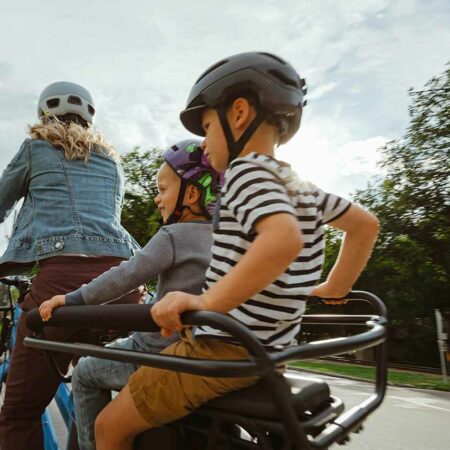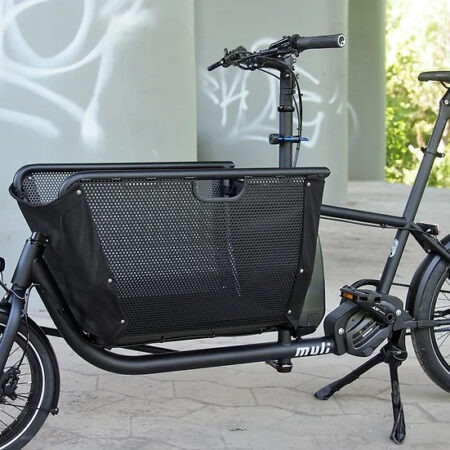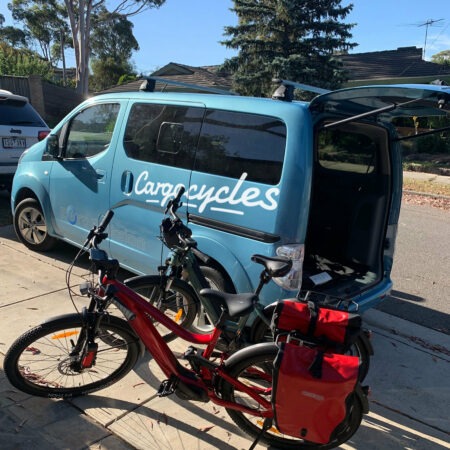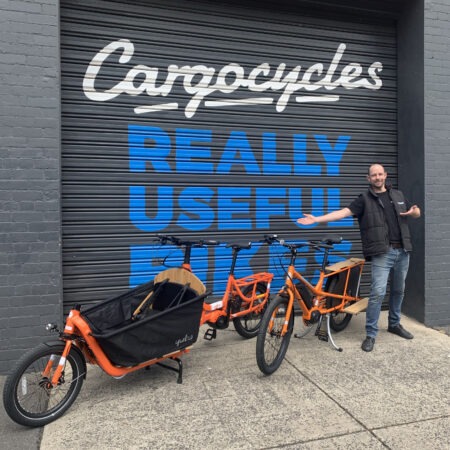E-bikes Charge Ahead. Ride On Magazine electric bike review
We helped the Ride On team a little while ago by loaning several of our electric bikes for review. They performed a very thorough test on all electric bikes available in Australia. Read the article below the picture of a grumpy looking bloke on an eZee Sprint below. That’s me…
Sales of power-assist bikes are taking off throughout the world. Simon Vincett tested 18 Australian options.
Everyone could use a bit of extra oomph in their pedalling sometimes and that is exactly what e-bikes provide. In fact, the 200 watt motor (the legal limit on Australian e-bikes) approximately doubles the power of your pedalling.
The very best thing that assisted bikes offer is confidence: confidence that you can take off from the intersection quickly enough to be comfortable in traffic and confidence that you can head off on a day ride with friends or family and you’ll be able to keep up with ease. They are also chosen by riders who don’t want to get sweaty on the way to work or who ride over hilly terrain.
The first step in appreciating e-bikes is to get over the weight factor. E-bikes are heavy (about 25kg) due to their power assistance system and that makes them seem cumbersome in comparison to unassisted bikes. However, they ride as comfortably as a conventional bike and the motor makes up for the extra weight.
They’re also heavy because they are loaded with useful accessories like mudguards, a chainguard, a rack and sometimes a lock, pump and tools. Many also come with lights. Very often you could ride one straight out of the bike shop and start running your errands.
E-bikes aren’t generally built for speed. Most available in Australia now have a hybrid or city-bike shape, providing an upright position that is good for taking in the view or surveying traffic conditions. The motors usually provide no more assistance over 27.5km/h. Some models come in only one size and tend to the smaller end of the range, so taller people may struggle to achieve an appropriate adjustment.
The motor is brought to life through either a throttle on the handlebar, or an assist system that needs you to be pedalling before it kicks in. Different assist levels can be set, and the power turned on and off, most often through a small touchpad fitted onto the handlebar.
Pedal assist systems are usually based on cadence, where sensors check how fast you are pedalling relative to how fast you’re actually travelling. If you need more assistance you change down a gear and the motor controller responds. However, some systems are based on torque – the pressure you are applying to the pedals – which may better suit those who prefer to push a big gear, or who struggle with using gears.
Read the full article here at the Ride On website.





